
In the field of glass manufacturing, the furnace is like a flowing "river of fire", and the paving block is the most solid river bed under this river. It not only has to withstand the day and night erosion of 1600℃ high-temperature liquid, but also to resist chemical erosion, mechanical pressure, and the test of hot and cold sudden changes. A high-quality paving block can last for more than 10 years. Still, if the material is not selected or maintained properly, it may need to be shut down for major repairs in as little as three years - meaning millions in repair costs and weeks of stalled production. This article will take you deep into the core technical logic of paving blocks and reveal how they create real and visible long-term value for glass companies.
1. Importance of material selection for paving blocks
2. Key considerations and technical details of material selection of paving blocks
3. The maintenance of the paving block of the glass furnace
4. To achieve the long-term operation of the glass furnace paving block strategy
5. Advantages of high-quality paving blocks
1. Importance of material selection for paving blocks
(1)Ensure long-term stable operation of the furnace
As the basic structure is in direct contact with high-temperature glass liquid in the furnace, paving blocks need to withstand high temperatures of 1400~1600℃, chemical erosion, and mechanical loads. Improper material selection will lead to rapid corrosion, cracking, or softening of the brick body, causing problems such as leakage and shut down for maintenance, seriously affecting production continuity.
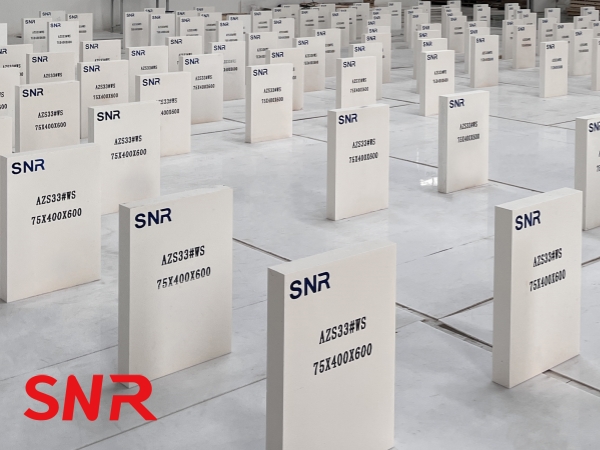
(2)Affecting glass quality
Poor-quality paving blocks may release impurities (such as iron and aluminum oxides) or produce bubbles and stone defects at high temperatures, pollute the glass liquid, reduce the light transmittance, uniformity, and strength of the finished product, and have a significant impact on high-precision products such as optical glass and electronic glass.
(3)Determine energy consumption and production costs
The thermal conductivity of the paving block plays a crucial role in determining the overall energy consumption and production cost of the furnace. As a key component of the furnace structure, the thermal conductivity of the paving block directly affects the thermal efficiency of the furnace. Specifically, the lower thermal conductivity of the paving block material can effectively reduce heat loss, which means that during the operation of the furnace, more heat can be retained inside the furnace for heating the glass liquid, thus reducing the dependence on external fuel and consumption. This not only helps to save energy and reduce carbon emissions but also directly reduces the operating costs of enterprises. On the other hand, the highly durable paving block material also has a significant contribution to reducing the overall cost. Durable paving blocks can withstand longer high-temperature erosion and mechanical stress, so their service life is relatively long. This means that the furnace needs to be stopped for replacement due to damage to the paving blocks much less frequently, reducing losses and additional maintenance costs due to downtime. In addition, the long-life paving block can also maintain the stability and consistency of the furnace structure, help to improve the quality and production efficiency of glass products, and further reduce the cost per unit of product.
(4)Safety considerations
Safety considerations play an important role in furnace design and operation, especially the thermal shock resistance of paving blocks. As a key component of the furnace exposed to extreme temperature changes, the thermal shock resistance of the paving block is directly related to the stability of the furnace structure and the safety of operation. If the thermal shock resistance of the paving block is not good, it means that when facing a drastic change in the temperature inside the furnace, the internal thermal stress of the brick will be huge. This stress exceeds the bearing limit of the material, which will lead to cracks, damage, and even collapse of the paving block structure. Once the paving block structure is damaged, the integrity and sealing of the furnace will be seriously challenged, and it is highly likely to cause a series of safety accidents. Among them, the leakage of glass liquid is one of the most direct and serious consequences. Once the high-temperature glass liquid leaks, it will not only cause devastating damage to the equipment and structure around the furnace but also may cause a fire, causing immeasurable property losses.
At the same time, the high-temperature glass liquid has a very high harm to the human body, once it comes into contact with personnel, it will cause serious burns and even life danger. In addition, the leaking glass liquid may also pollute the production environment, affect the normal operation of other production lines, and further aggravate the severity of the accident. Therefore, ensuring that the paving block has good thermal shock resistance is one of the key measures to prevent furnace safety accidents and ensure the safety of personnel and equipment. When selecting materials, priority should be given to materials that have been rigorously tested and proven to have excellent thermal shock resistance. At the same time, the design and operation of the furnace should also fully consider the control of temperature changes to reduce the thermal stress endured by the paving blocks, to ensure its long-term stable operation. Through these measures, we can effectively improve the safety of the furnace and provide a solid guarantee for the safe production of enterprises.
2. Key considerations and technical details of material selection of paving blocks
2.1 Material selection factors
(1)High temperature performance
♦Refractoriness: The material needs to be higher than the working temperature of the glass liquid (such as sodium calcium glass liquid about 1500℃), and the refractoriness of the commonly used fused cast AZS block is above 1750℃.
♦High-temperature creep resistance: The ability to resist deformation at high temperatures for a long time to avoid structural instability caused by softening of paving blocks.
♦Load softening temperature:
(2)Resistance to chemical attack
♦Liquid glass composition adaptation:
♦Acid erosion (such as borosilicate glass) :High silica or quartz bricks can be selected, but it is necessary to pay attention to the risk of crystal transformation at high temperatures.
♦Influence of gaseous medium: For example, SO3, Cl2 in the furnace atmosphere, it is necessary to evaluate the ability of the material to resist oxidation-reduction atmosphere (for example, AZS is better than bonded brick).
(3)Thermal shock stability
♦Thermal expansion coefficient: Low expansion materials can reduce the stress cracking caused by temperature fluctuations.
♦Thermal conductivity and structural design: High thermal conductivity materials (such as corundum bricks, with thermal conductivity of 2.5 to 3.5 W/m·K) can transfer heat quickly, but need to be designed with insulation to balance thermal stress.
(4)Mechanical property
♦Room temperature and high-temperature compressive strength: The paving block should bear the upper block structure and the glass hydrostatic pressure (typical load 0.5~ 1.0MPa), and the high-temperature compressive strength of electric melting fused cast AZS block is > 50 MPa.
♦Wear resistance: To cope with glass liquid flow erosion, dense structural materials (porosity < 15%) are better.
(5)Thermal characteristics matching
♦Thermal conductivity: High thermal conductivity materials (such as silicon carbide bricks) are conducive to uniform heat dissipation at the bottom of the furnace, but need to support the insulation layer; Materials with low thermal conductivity, such as lightweight mullite bricks, are suitable for energy efficient designs.
♦Heat capacity and heat storage: Low heat capacity materials are required for furnaces produced periodically to reduce heating energy consumption.
(6)Economy and life balance
♦Cost performance analysis: Fused cast AZS block has a high cost, but its life can reach 5~8 years; The cost of clay bricks is low but the life is only 1 to 2 years, and the cost accounting of tons of glass needs to be integrated.
♦Easy maintenance: Modular design brick type (such as standard size 300×150×75 mm) can shorten the replacement time and reduce the loss of production.
2.2 Comparison of mainstream materials and selection recommendations
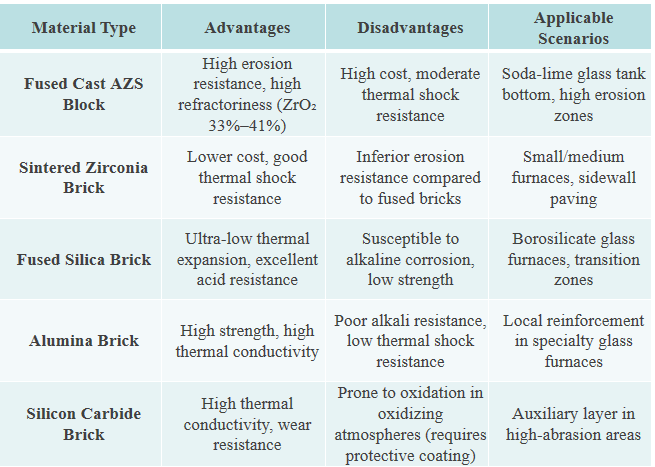
2.3 Material selection optimization strategy
♦Differentiated selection of materials: Fused cast AZS blocks are used in the high erosion area at the bottom of the furnace, and high aluminum bricks are used in the non-contact area to reduce costs.
♦Composite structure design: lightweight heat-insulating brick is used at the bottom to reduce heat loss, and dense block is used at the surface to resist erosion.
♦Pre-firing and non-destructive testing: XRD analysis of crystal phase composition, ultrasonic detection of internal cracks to ensure the consistency of brick quality.
3.The maintenance of the paving block of the glass furnace
3.1. Daily inspection and monitoring
(1)Surface condition inspection
►Visual observation: Check whether there are cracks, spalling, bulging, or erosion pits on the surface of the paving blocks every day, paying particular attention to whether the brick joints crack due to uneven expansion.
►Color change: Observe whether the color of the block is black (possibly due to infiltration of metal impurities) or white (high temperature oxidation or glass liquid penetration), and analyze the reason in time.
(2)Temperature monitoring
►Infrared thermal imaging: Regular use of infrared thermometers to monitor the temperature distribution of paving blocks, found that local overheating (> design temperature 50℃) may indicate brick erosion or structural damage.
►Thermocouple distribution control: Buried thermocouples in key areas (such as throats) to monitor temperature fluctuations in real-time and avoid thermal stress concentration.
(3) Liquid glass leakage warning
►Bottom cooling air system monitoring: Check whether the cooling air temperature at the bottom of the furnace is abnormally increased (possibly due to the thinning of the brick body, resulting in increased heat conduction), and check the risk of leakage.
►Emergency pallet inspection: If the furnace is designed with an emergency pallet at the bottom, clean the accumulated material regularly and check the integrity of the pallet.
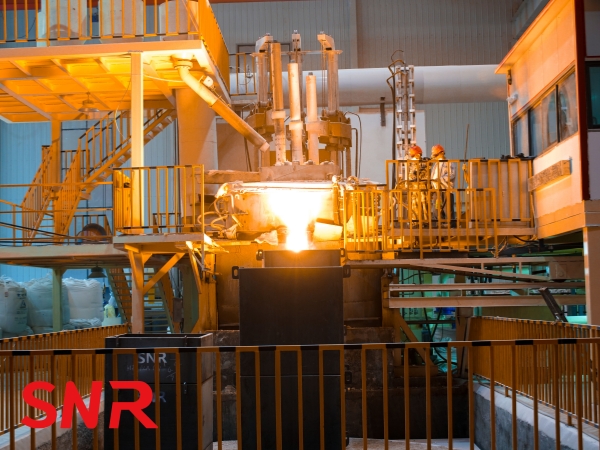
3.2 Temperature management
(1)Thermal shock avoidance
♦Rising and cooling rate control: the heating rate ≤3℃/min when the cold furnace is started, and the cooling rate ≤2℃/min when the furnace is stopped, to prevent the cracking of the brick due to uneven thermal expansion.
♦Local temperature equalization: By adjusting the burner flame distribution or auxiliary electric heating, reduce the temperature difference in the bottom area of the furnace (target temperature difference <30℃).
(2)Maintenance of thermal insulation layer
♦Thermal insulation material inspection: Check whether the light insulation layer (such as alumina hollow spherical brick) under the paving block is pulverized or collapsed during annual maintenance, and replace it in time to ensure thermal efficiency.
♦Sealing guarantee: To ensure that the brick joint filling material (such as zirconium fire mud) does not fall off, to prevent high temperature gas into the bottom resulting in insulation failure.
3.3 Chemical erosion protection
(1)Raw material composition control
♦Liquid glass composition management: To avoid sharp fluctuations in the content of alkaline oxides (Na2O, K2O) or acidic components (B2O3) in raw materials, to reduce the abnormal erosion of the paving block.
♦Impurity filtration: Reduce the content of metal particles such as Fe and Cr in the liquid glass by settling in the molten pool or filtering devices (such as platinum channels) to prevent their penetration into the brick and accelerate corrosion.
(2)Atmosphere control
♦Reducible atmosphere control: The oxygen combustion furnace needs to monitor the water vapor content (<5%) to avoid the reaction of H2O with ZrO2 in the brick body to produce a brittle phase.
♦Sulfide treatment: Regular cleaning of flue ash to reduce the sulfate attack of SO3 gas on bricks (such as fused cast AZS blocks).

3.4 Mechanical damage prevention
(1)Liquid glass flow management
♦Flow rate control: Through furnace design (such as bubbling technology) or agitator adjustment, reduce the erosion rate of glass liquid on the paving blocks (recommended <0.1m/s).
♦Foreign matter cleaning: regularly salvage the unmelted compound or crystal in the melting end to prevent it from scratching the surface of the brick body.
(2)Operating specification
♦Feeding method optimization: Use thin-layer multiple feeding to avoid the direct impact of large blocks of materials on paving blocks.
♦Tool usage specifications: During maintenance, use non-metallic tools (such as graphite rods) to clean the brick joints, and it is strictly prohibited to knock the brick body with hard objects.
3.5 Regular maintenance and repair
(1)Surface repair technique
►Hot repair: For small cracks or erosion pits, homogeneous refractory mud (such as AZS hot supplement) is used to fill while hot, and high-temperature sintering is used to cure.
►Cold spraying: During the shutdown, plasma spraying technology is used to form ZrO₂ coating (thickness 0.5~1mm) on the surface of the brick body to enhance erosion resistance.
(2)Local replacement strategy
►Modular replacement: For areas where the erosion depth exceeds 1/3 of the brick thickness, the "insert method" is used to locally replace the paving block to avoid a large area of furnace shutdown.
►Brick joint treatment: After replacement, use compressed air to clean the brick joint, fill it with high-toughness fire mud (such as zirconium mud containing SiC fiber), and reserve 1~2mm expansion joints.
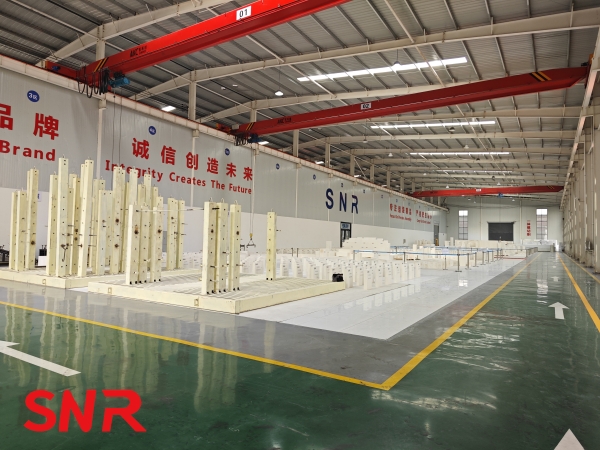
3.6 Record analysis and optimization
(1)Maintenance file creation
►Erosion rate record: Measure the thickness of the paving block every six months (ultrasonic thickness gauge), plot the erosion curve, and predict the remaining life (such as AZS annual erosion rate is usually <2mm).
►Defect map analysis: Take photos of brick damage and mark the location, accumulate data to identify high-frequency fault areas.
(2)Process parameter optimization
►Maintenance cycle adjustment: Dynamic maintenance plan based on historical data (such as key inspection every 3 months in severely eroded areas).
3.7 Emergency handling
(1)Material leakage emergency response
♦Rapid cooling: Immediately reduce the combustion power when the leakage is found, and start an emergency cooling system (such as nitrogen injection) to solidify the glass liquid.
♦Temporary plugging: Use refractory fiber blanket + fast curing castable to wrap the leak point, and strive for maintenance time.
(2)Furnace shutdown protection measures
♦Dry protection: When the furnace is stopped for more than 48 hours, it is necessary to cover the surface of the paving block with aluminum oxide powder (thickness 50~100mm) to prevent moisture absorption and powdering.
♦Wet protection: short-term furnace shutdown can maintain the micro-positive pressure in the furnace, and dry air is injected to maintain the drying of the brick body.
4.To achieve the long-term operation of the glass furnace paving block strategy
4.1 Reasonable furnace operation system
The establishment of a scientific and reasonable furnace operation system is of far-reaching significance for ensuring long-term operation and prolonging the service life of the paving blocks. This system is not only related to the daily operation efficiency of the furnace but also directly related to production safety and product quality. In terms of temperature control, the scientific and reasonable operating system requires strict implementation by the requirements of the glass production process. This means that in the heating, cooling, and constant temperature stages of the furnace, it is necessary to maintain a smooth change in temperature and avoid sharp fluctuations in temperature, thereby minimizing the thermal stress borne by the paving blocks. Specifically, in the start-up stage of the furnace, the temperature should be raised at a slow and uniform rate according to the predetermined temperature curve.This process is crucial because it allows the paving blocks to gradually adapt to temperature changes and avoid the thermal shock effect caused by excessive heating, thus effectively preventing damage to the paving blocks.
4.2 Optimize the furnace structure design
From the beginning of the furnace design, the use and protection of paving blocks should be fully considered. For example, the reasonable design of the slope and shape of the bottom of the furnace helps the natural flow of the glass liquid, so that it can be evenly distributed on the surface of the paving block, and avoid the excessive erosion of the paving block in a certain area caused by the accumulation of local glass liquid.

At the same time, in the thermal insulation design of the furnace, it is necessary to use effective thermal insulation materials to reduce the heat loss at the bottom of the furnace, which can not only reduce energy consumption, but also make the temperature environment of the paving block more stable, avoid additional thermal stress due to excessive temperature differences, and extend the service life of the paving block.
4.3 Periodic performance evaluation and update
It is necessary to conduct a comprehensive evaluation of the performance of the paving block of the glass furnace regularly, and analyze the remaining service life, erosion degree, structural integrity and other key indicators of the paving block combined with the data coll.
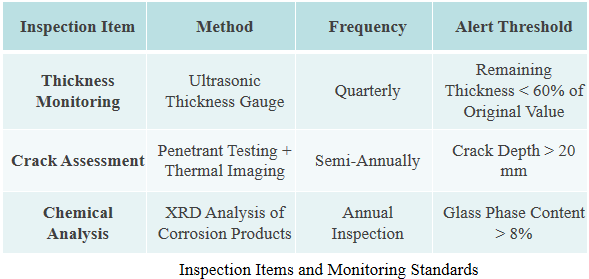
According to the evaluation results, plan the renewal plan of the paving block in advance. For those paving blocks that are close to the limit of their service life or whose performance is seriously reduced, they should be replaced in a timely manner, and must not be forced to continue to use in order to save costs, so as not to cause major accidents throughout the furnace due to the failure of paving blocks, affecting the continuity of glass production and product quality.
5. Advantages of high-quality paving blocks
5.1 Improve the stability of the internal environment of the furnace
High-quality paving blocks usually have good thermal stability and weather resistance, which means that they are able to maintain structural integrity at extreme temperatures and are not prone to deformation or cracking. In the environment of the furnace, which needs to withstand high temperatures and frequent temperature changes, stable paving blocks can effectively reduce the internal deformation or damage caused by the thermal expansion and cold contraction of the material, thereby improving the overall stability and durability of the furnace.
5.2 Optimize the internal cleaning and maintenance of the furnace
High quality paving blocks usually have excellent stain resistance and easy cleaning, which makes cleaning and maintenance of the interior of the furnace much easier. In the process of using the furnace, it is inevitable to produce some dust, soot and other impurities, which can be more easily removed if attached to the easy-to-clean paving block, so as to keep the interior of the furnace clean and sanitary. This not only helps to improve the operating efficiency of the furnace, but also extends its service life.
5.3 Improve the thermal insulation performance of the furnace
Although the paving block itself is not directly involved in the thermal insulation process of the furnace, the heat conduction performance of high-quality paving blocks is low, which can effectively reduce the heat loss. Laying such paving blocks at the bottom of or around the furnace can help the furnace to maintain a stable internal temperature to a certain extent, reducing the increase in energy consumption caused by heat loss.
5.4 Enhance the beauty of the furnace
In addition to the above practical advantages, high-quality paving blocks can also add a beauty to the furnace. Especially in some occasions that have certain requirements for the appearance of the furnace, the selection of uniform color and beautiful texture of the paving block for laying can greatly improve the overall visual effect of the furnace, so that it is more in line with people's aesthetic needs.
As the "invisible guardian" of furnace operation, the optimization of material selection, maintenance, and long-term management strategies for the paving blocks of glass furnaces is not only a breakthrough in technology but also the core driving force for glass enterprises to achieve cost reduction, efficiency improvement, and sustainable development. From the perspective of materials science, paving blocks need to balance multiple properties such as refractoriness, corrosion resistance, and thermal shock stability under extreme working conditions; from the perspective of production practice, their life and reliability are directly related to the continuous operation capability, energy efficiency, and product quality of the furnace. Through systematic analysis, this paper reveals the key logic of the full life cycle management of paving scientific material selection is the foundation, meticulous maintenance is the guarantee, and forward-looking design is the soul of long-term operation.
In the material selection link, the application of differentiation strategy and composite structure design can not only resist chemical attacks in high-corrosion areas but also take into account economy and thermal efficiency; at the maintenance level, the standardization of daily monitoring, temperature control, and emergency treatment transforms passive maintenance into active defense, greatly reducing the risk of accidental shutdown; and the optimization of furnace structure and operation system creates a stable and balanced working environment for paving blocks so that their performance can be maximized. The synergy of these strategies ultimately translates into visible benefits for glass companies: furnace life is extended by 30%, fuel costs are reduced by 15%, and production continuity is increased to more than 98% - this is the dual value of technology and management.

Henan SNR Refractory Co., Ltd (SNR) fused cast AZS blocks are not only a refractory material, but also a strategic partner for glass companies to move towards efficient and green production. Through material innovation and design optimization, it extends the furnace overhaul cycle from 3 years to 10 years, reduces the cost of a single repair by 60%, and helps companies reduce carbon emissions by 15% to 20% (based on improved fuel efficiency and increased waste brick recycling rate). For modern glass factories that pursue zero unexpected shutdowns, zero quality fluctuations, and zero resource waste, SNR fused cast AZS blocks verify value with data and fulfill promises with technology - making every brick the cornerstone of the long-term operation of the furnace.
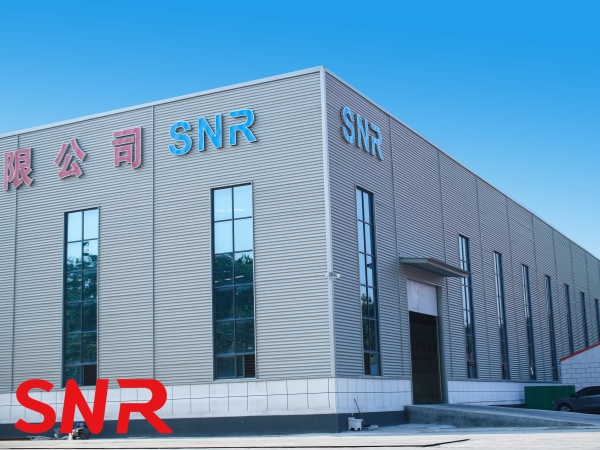
Today, as the glass industry moves towards intelligence and low carbonization, SNR fused cast AZS block use the power of technology to rewrite the possibilities of refractory materials. Choosing SNR means choosing the ultimate pursuit of quality, precise control of benefits, and deep empowerment of the future of the industry.
If you have any needs, please contact us.
Web:www.snrefractory.com
Email:moon@snrefractory.com